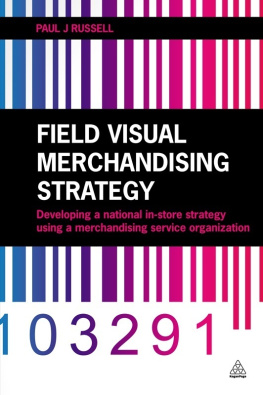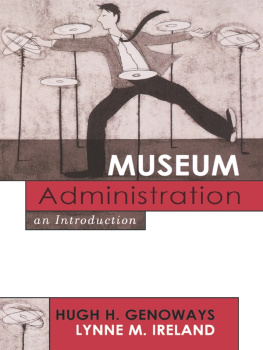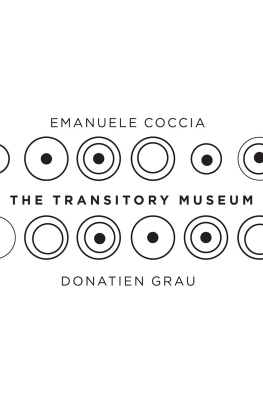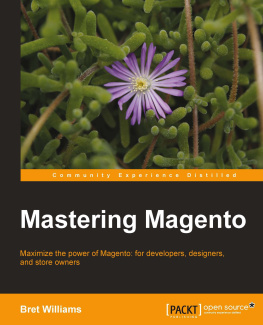Museum Store
The Managers Guide
FOURTH EDITION
Museum Store Association
Celebrating 58 years, the Museum Store Association is a nonprofit, international association organized to advance the success of nonprofit retail and of the professionals engaged in it. By encouraging high standards of professional competence and conduct, MSA helps nonprofit retail professionals at museums and cultural institutions better serve their organizations and the public. MSA supports museum stores and vendor affiliates through publications, annual meetings, regional chapters, networking and professional resources.
Titles available from the Museum Store Association
The New Store Workbook, Third Edition, revised with new content in 2015 by Susan DeLand, DeLand Consulting, Long Beach, CA.
Museum Store: The Managers Guide, Fourth Edition, revised with new content in 2015 by Susan DeLand, DeLand Consulting, Long Beach, CA.
Museum Store Association Retail Industry Report, 2014 Edition
Marketing Cultural and Heritage Tourism, Rosemary Rice McCormick
Numbers by the Book

Museum Store Association
3773 E Cherry Creek Dr North, Suite 755
Denver, CO 80209
www.museumstoreassociation.org
First published 2015 by Left Coast Press, Inc.
Published 2016 by Routledge
2 Park Square, Milton Park, Abingdon, Oxon OX14 4RN
711 Third Avenue, New York, NY 10017, USA
Routledge is an imprint of the Taylor & Francis Group, an informa business
Copyright 2015 by Museum Store Association
All rights reserved. No part of this book may be reprinted or reproduced or utilised in any form or by any electronic, mechanical, or other means, now known or hereafter invented, including photocopying and recording, or in any information storage or retrieval system, without permission in writing from the publishers.
Notice:
Product or corporate names may be trademarks or registered trademarks, and are used only for identification and explanation without intent to infringe.
Library of Congress Cataloging-in-Publication Data:
Museum store: the managers guide: basic guidelines for the new museum store manager Museum Store Association. Fourth Edition.
pages cm. (Museum Store Association; 1)
ISBN 978-1-62958-031-9 (paperback) ISBN 978-1-62958-032-6 (consumer ebook)
1. Museum storesManagement. 2. Merchandising. I. Museum Store Association (U.S.)
HF5469.65.M8697 2015
658.87dc23
2014040508
Design by Lisa Devenish
ISBN 978-1-62958-031-9 paperback
The museum store concept has successfully become one of the most exciting areas in retail. The quality of merchandise, the educational aspect of the products, and the link to the total museum experience each contribute to the growing popularity of museum stores with the general public. This is true in stores of all types of cultural organizations.
Acknowledging the increasing need for museums to generate earned income, top museum administrators are taking their store operations more seriously than ever before. Along with this growing respect for store operations within the museum is the increased expertise and sophistication within the field of museum store management. Together these elements have forged a unique niche in retail.
With economic constraints forcing museum stores to be more professional, entrepreneurial, and creative, confusion arises occasionally regarding retail in a not-for-profit setting. The term nonprofit retail does not refer to unprofitable operations; rather, it means that the overall purpose of the retail operation is to benefit the nonprofit parent entity. Museum store managers are very much interested in running profitable operations to further the museums educational purpose. This is not a violation of a museums nonprofit status.
The museum store strives to offer products that reflect the purpose and quality of the parent institution. This is the single most important factor separating nonprofit retail from a strictly commercial operation.
Successful store managers keep the museums mission in mind when buying and producing merchandise, training staff, and displaying products. By doing this, they gain the respect and cooperation of other cultural professionals and build a loyal clientele.
Nonprofit retail in the museum setting is unique, exciting, and challenging, as is the role of the store manager. The store serves the museum by expanding its educational role and by providing an additional revenue source. It also serves the visitor, who seeks to take home a tangible connection to the museum experience. Many organizations have tracked their visitors path and found that the store is the last stop before leaving. This gives the store, through display, product mix, and customer interaction by staff, an opportunity to make this last experience a great one. This should echo the visitors interaction with the exhibitions and extend their impressions in a strong and positive way.
Educational Resource
The store must be viewed as an educational extension of the museum that reflects its collections, exhibitions, and programs. This is as important as its financial role. Your responsibility as the store manager is to see that key museum administrators understand the stores educational function and support the store accordingly.
Too often, the store manager is not part of the institutional decision-making or planning process. As a result, problems arise, such as a new exhibit that opens before the store has stocked related merchandise. In such cases, not only are visitors disappointed, but the museum misses income opportunities.
The store manager must carry the banner for the store as an integral part of the museums educational and earned-revenue function to museum administrators. There can be tension between the store manager and other museum professionals, who may see the store as a commercial entity rather than an academic or artistic part of the institution. Unless you make persistent efforts to mitigate this tension, you could spend more time working through political snares than on your store operations. Avoid these perceptions by informed and focused choices in the books and products sold.
Seek to unite with other members of the museum staff for the greater mission of the institution. Ask the advice of the curator on sensitive merchandise decisions. Develop good working relationships with educational and exhibit staff and, of course, the director. Ideally, you should have direct access to the director or assistant director.












 Museum Store Association
Museum Store Association